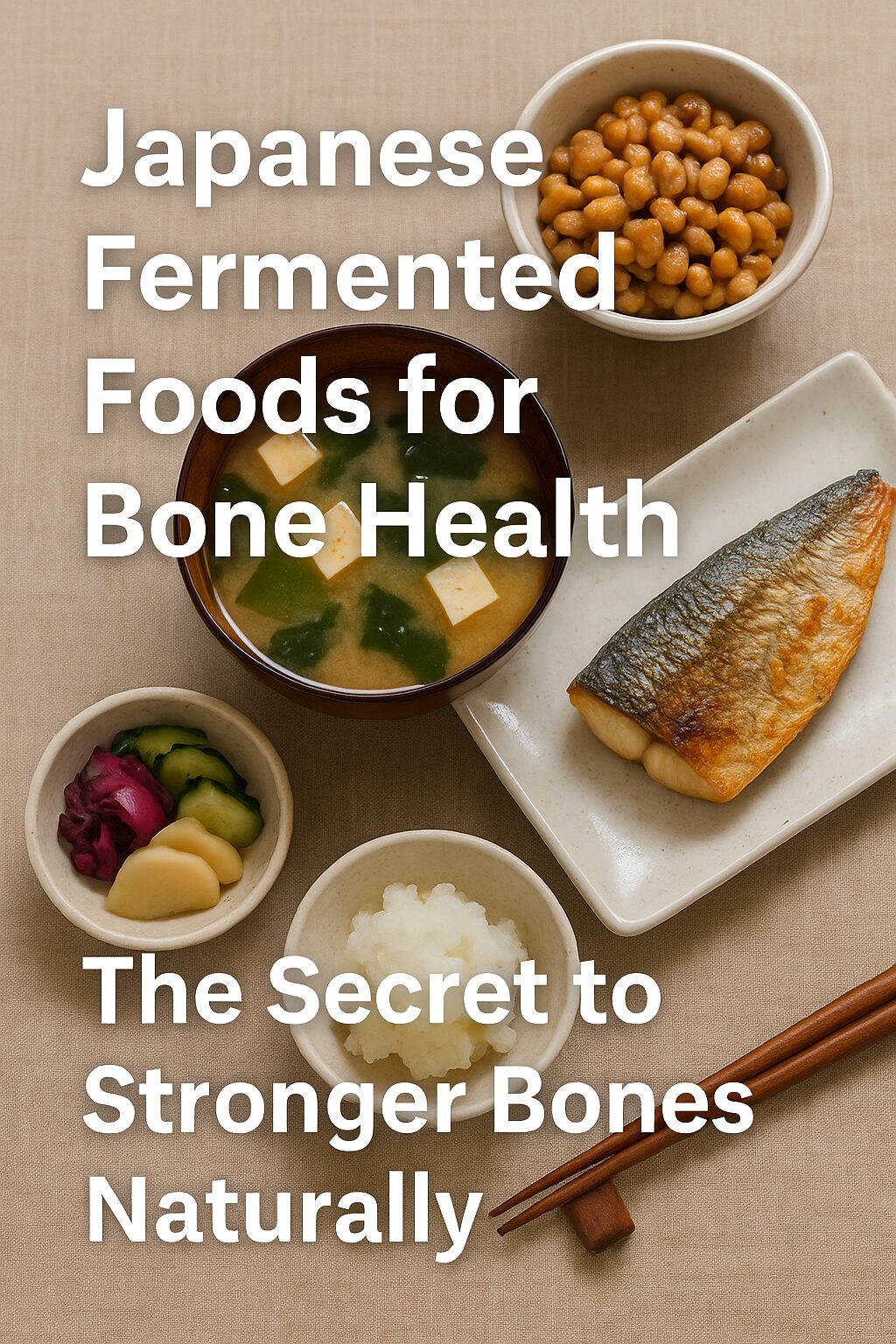Bone health becomes a growing concern as we age, especially for women after menopause. While calcium and vitamin D get most of the attention, recent studies suggest fermented foods may play an essential role in maintaining strong bones. In Japan, fermented foods have been part of daily life for centuries—not just as flavor boosters, but as powerful health allies. Let’s explore why Japanese fermented foods may hold the secret to better bone health.
The Japanese Tradition of Fermented Foods and Daily Health
Fermentation in Japanese Culture
Fermented foods in Japan aren’t occasional side dishes—they’re staples. Miso soup appears in nearly every breakfast. Natto, though polarizing in taste, is a common protein source. Tsukemono (pickled vegetables), soy sauce, and rice vinegar all involve fermentation and appear daily in home cooking.
This constant exposure to fermented foods is unique. While other cultures have their own fermented staples (e.g., yogurt in the West or kimchi in Korea), few populations eat them as frequently and in such variety as the Japanese.
Longevity and Low Osteoporosis Rates
Japan boasts one of the highest life expectancies in the world. While genetics and overall lifestyle play roles, diet is a major factor. According to the International Osteoporosis Foundation, hip fracture rates in Japan are significantly lower than in North America or Europe. Though multiple factors contribute, the nutrient profile of fermented foods may help explain the difference.
For more ways to protect your bones through food, check out how to absorb calcium better for strong bones.
Unique Nutrients in Japanese Fermented Foods That Support Bone Strength
Vitamin K2 in Natto
Natto, a fermented soybean product, contains a powerful bone-supporting nutrient: vitamin K2 (specifically MK-7). This nutrient activates proteins that help bind calcium to bones and prevent calcium buildup in arteries. Western diets rarely include significant K2, making natto a standout.
One study published in the Journal of Bone and Mineral Metabolism found that daily natto intake correlates with higher bone mineral density in postmenopausal women.
Source: J Bone Miner Metab (2006)
If you find natto hard to eat, powdered natto or K2 supplements derived from natto may be an option.
Isoflavones and Fermented Soy
Miso and soy sauce contain isoflavones—plant compounds with estrogen-like effects. After menopause, when natural estrogen levels drop, isoflavones can help maintain bone density. Fermentation enhances the bioavailability of these compounds, meaning the body absorbs and uses them more efficiently.
To get the most benefit, choose unpasteurized miso and avoid boiling it. Stir into warm (not hot) water or soup for maximum enzyme and probiotic benefits.
How Japanese Eating Habits Naturally Support Bone Density
Frequent Small Doses of Bone-Friendly Foods
Rather than relying on supplements or large quantities of dairy, the Japanese diet provides steady, small amounts of bone-supporting nutrients throughout the day. A typical Japanese meal might include a small piece of grilled fish (for vitamin D), miso soup (for isoflavones), pickled vegetables (probiotics), and a bowl of rice (energy source to support nutrient absorption).
This “little-by-little” approach ensures that bones receive a steady supply of nutrients, which is more effective than irregular large doses.
Lower Inflammatory Load
Chronic inflammation can weaken bones over time. Japanese fermented foods—along with green tea, seaweed, and vegetables—are rich in antioxidants and gut-friendly compounds that may reduce systemic inflammation. A healthier gut also supports better mineral absorption, which directly impacts bone density.
Comparing Japanese Fermented Foods to Western Ferments
Diversity and Density
Western fermented foods like yogurt, kefir, and sauerkraut offer probiotics and some calcium, but they lack the isoflavones and vitamin K2 that are abundant in Japanese options like natto and miso. Also, Japanese fermented foods often pair with other nutritious ingredients—miso with seaweed, natto with green onions and egg yolk—creating a synergistic nutritional effect.
If you’re interested in broader dietary context, explore our article on Japanese food culture and traditions.
Regularity of Use
In many Western diets, fermented foods are treated as occasional health boosters. In Japan, they are foundational. This regular use matters. A diet that includes fermented foods every day can have compounding effects over time, especially for bone preservation.
Easy Ways to Add Japanese Fermented Foods to Your Daily Diet
Start Simple with Miso Soup
Miso paste is widely available and easy to use. Mix with hot water and add tofu, seaweed, and green onions. Enjoy it for breakfast or a light lunch starter. Look for organic, unpasteurized versions for best nutritional value.
Try Natto for a Vitamin K2 Boost
It may take some getting used to, but natto is incredibly nutrient-dense. Serve it over rice with a splash of soy sauce and a raw egg yolk, or mix it into a salad.
Use Fermented Soy Sauce and Rice Vinegar
Even common condiments like soy sauce and vinegar contribute small amounts of beneficial compounds. Choose traditional, naturally brewed varieties for the most health benefits.
Interested in Natural Bone Support Beyond Food?
If you’re looking to reinforce your bone health further, especially after menopause, dietary supplements can complement your food habits. Our Juveriente® Bone Strength Complex harnesses the power of traditional Japanese mandarin extract, rich in beta-cryptoxanthin—a compound shown to promote bone cell activity and reduce bone loss.
It’s an easy, natural way to support your bones, inspired by the same cultural wisdom that makes Japanese fermented foods so powerful.
Explore Bone Strength Complex on Amazon →








